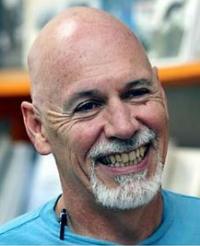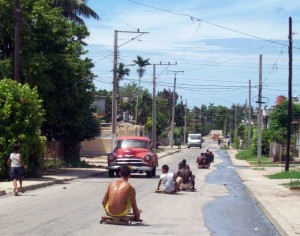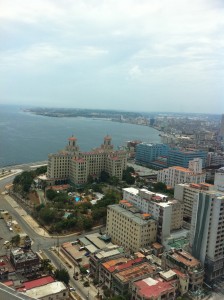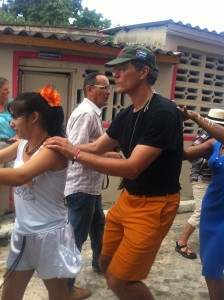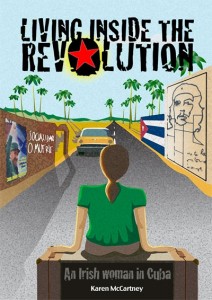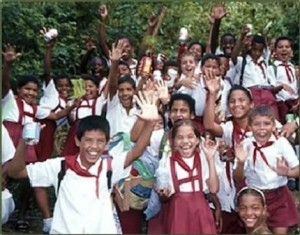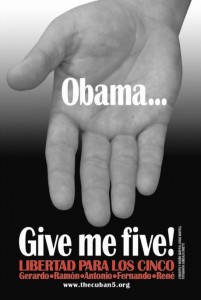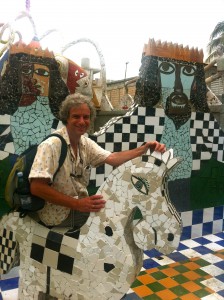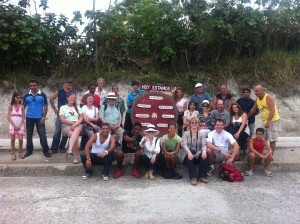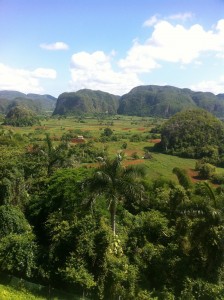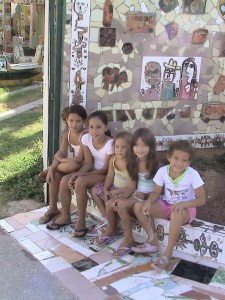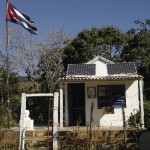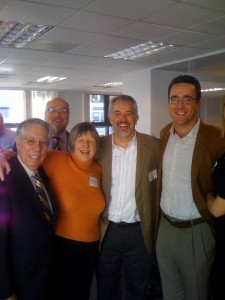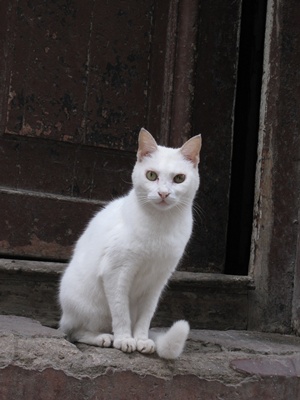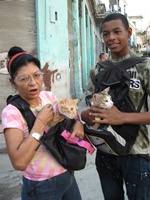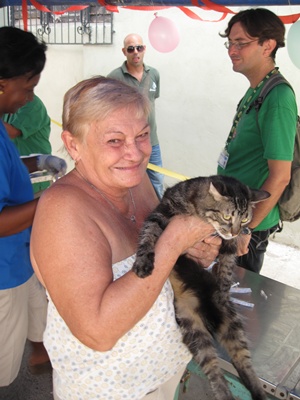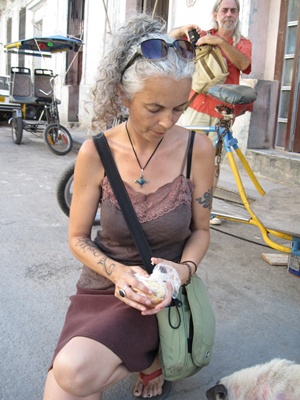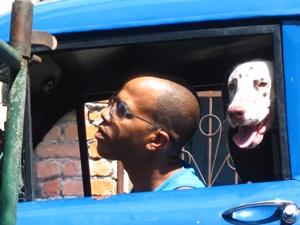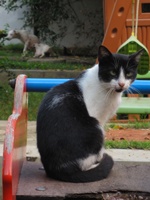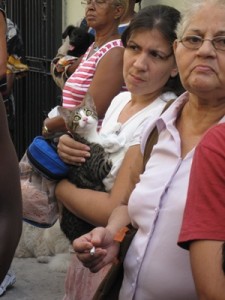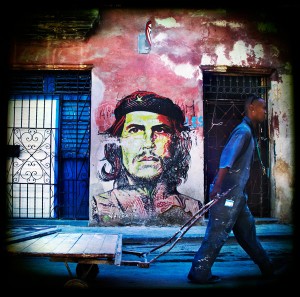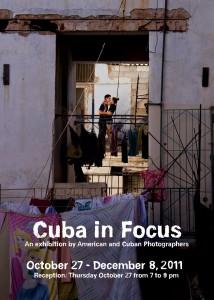
Malia in Oahu
Update 11/28/12: A few photos of our bon voyage Malia staff lunch are now posted on Facebook.
“If you come here to help me, you’re wasting your time. If you come because your liberation is bound up with mine, then let us work together.” —Lilla Watson
In 1991 as a graduate student of International Relations, I signed up for a Global Exchange Reality Tour to Cuba. I wanted to learn about the impacts of the U.S. embargo on Cuba and understand what the current socioeconomic realities of the Special Period were on the nation. That trip dramatically expanded my understanding of the power of travel.
While I had backpacked to over 30 countries before that Reality Tour, I had never experienced that type of life sharing journey before. I engaged with grandparents, doctors, teachers, artists, musicians and politicians. In effect Reality Tours changed my life. I experienced connection and insights, and returned to the United States committed to advocate for sane U.S. foreign policy. Once home, I promptly cut out and placed Lilla’s quote (see above) on my fridge. Little did I know that six years later I’d start working at Global Exchange, where Lilla’s quote found a new home on the Global Exchange office wall.

Visiting Art and Hope in Cuba, with Ethical Traveler
Today it is my bittersweet honor to announce that after almost 16 vibrant years I am transitioning out of Reality Tours. Being the Director has been a true vocation. I’ve had the unique opportunity to combine my skills as an educator, social justice activist and alternative travel business woman to build up Reality Tours’ travel destinations, themes and reach.
Looking back I sit and smile thinking of all the talented, opinionated and solidarity minded people that ebbed and flowed through the Reality Tours department in San Francisco. And I think of the everyday heroes in the U.S. and all around the world whose generosity of spirit welcomed us, collaborated with us and compelled us to meet them as brothers and sisters. We learned about their struggles, successes and aspirations which inspired us to seek changes in U.S. foreign and economic policies.
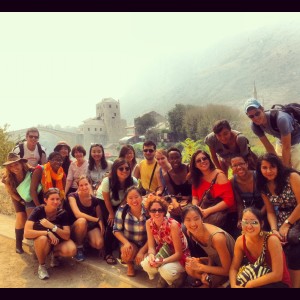
Princeton University in Mostar, Bosnia, 2012
I know the model of socially responsible travel to educate and inspire advocacy works. In fact, I could fill volumes based on my personal experiences and those often brilliant, joyful and incredibly painful moments of learning.
From the jungles of the Amazon and the struggle of the Sarayuku nation, to the healing and rehabilitation efforts in IDP camps of Northern Uganda; from facilitating thousands through migration in Havana and sharing the incredible tenacity of spirit of Cuban’s through the “fruits” of their Revolution and in their models of sustainability post “peak oil” to learning about how poachers become conservationists in Tanzania; from the smiles and solemn survival stories of children saved from the sex tourism industry in Cambodia, Nepal, Peru & Thailand to the important organizing efforts of elders training the next generation of leaders in Argentina, Brazil, South Africa and Vietnam… I leave Reality Tours personally and professionally enriched with memories and experiences, and breathtaking vistas.

Malia with Yury, Ecuador Reality Tours program officer
To each of the program officers who so diligently work to take care of every creature comfort, airport transit, hotel reservation, and days and days of program confirmations, thank you for your solidarity! It is such necessary work, yet it is painstaking and not so glamorous. When Reality Tours runs a 100 departures a year and 98 go off perfectly, nobody knows how much work it takes to make that happen! You are all stars.
Reality Tours would not exist without our members and supporters. Sometimes I’ve called you strangers, then associates and later friends, collaborators, teachers and alumni. I’ve shared some of my deepest human connections beside you, and cultivated some of my closest friendships.
Some of you “serial trippers” know I will miss traveling with you! Again, I could write volumes on what I have seen as humans blossom, when we disconnect from the phones, computers and to-do lists and when we truly spend time to talk, share and push our comfort zones to be and to grow. How many times have I lead a group when each person typically required 1-2 feet around them to have their “zone” of comfort, only by the end of a tour to see everyone touching arms and hugging their new friends good-bye? There are so many surprising rewards on a group travel experience.
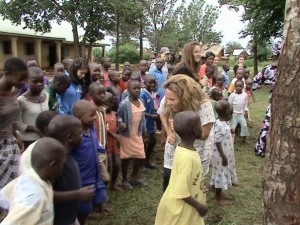
Suffolk Univeristy group visiting an orphanage in Busia, Uganda
For those of you I giggled with trying to find a bathroom to wash my fingers after blue ink was all over my face in Tehran, or scrambled to find “relief” in the fields of Nagpur, India or tried out bartering in crafts markets in Amman knowing but a few words in Arabic, I thank you. To those I cried with, flooded by the power of the human spirit hiking through the Cu Chi and the Sarajevo tunnels; trying to get through check points from the Occupied Territories in Palestine into Israel; and being permeated by the horrific human costs of war in the War Remembrance Museum in Ho Chi Minh City and in Pyong Yang, the Apartheid Museum in Johannesburg… I thank you. To those I just held hands with as we heard the testimonies of the International Criminal Tribunal for Rwanda in Arusha, and walking through the Killing Fields, I thank you. And, for those that I dragged out to teach salsa dancing to over and over, ya tu sabes, gracias.
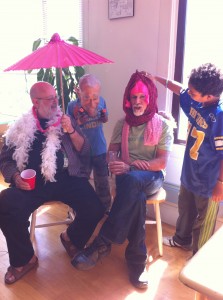
Kevin and Reede being “Good Sports” as my sons dress up
Words cannot express my deepest appreciation to the Global Exchange founders Kevin Danaher, Kirsten Moller and Medea Benjamin to whom I have been so blessed to work with. They each are hard working visionaries and phenomenal human beings, yet they are also friends, babysitters and cuddlers, and mentors. How I love and admire each of you!
Global Exchange has been a family to me. To all the members and staff, and especially to those that serve and have served on the Board of Directors, you are brothers and sisters and I thank you for your commitment to make this world a better place. Because of your tenacity and persistence, I know “another world is possible”. I am who I am because of my years at Global Exchange, and I look forward to moving forward pa’lante and continuing to using my life in service to humanity and to the planet, because its liberation is bound up with mine!
With Aloha,
Malia Everette



